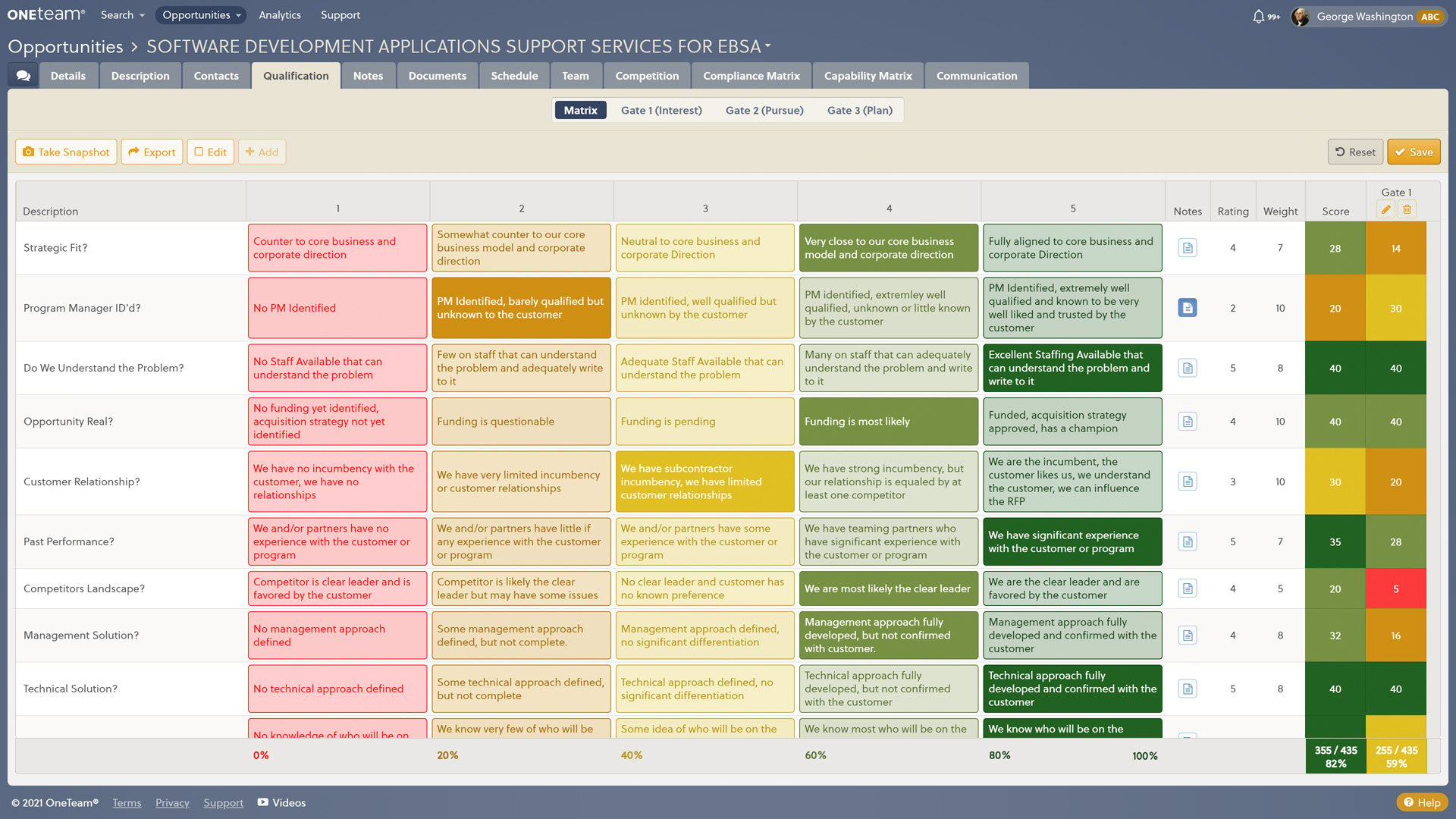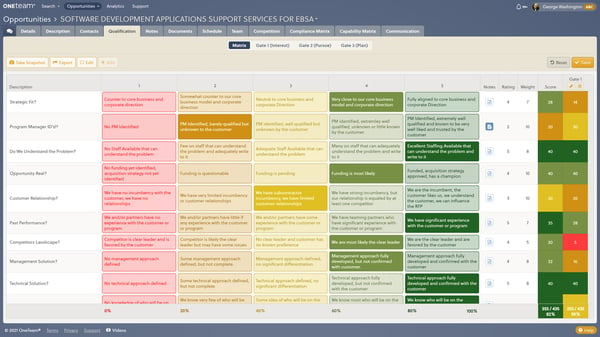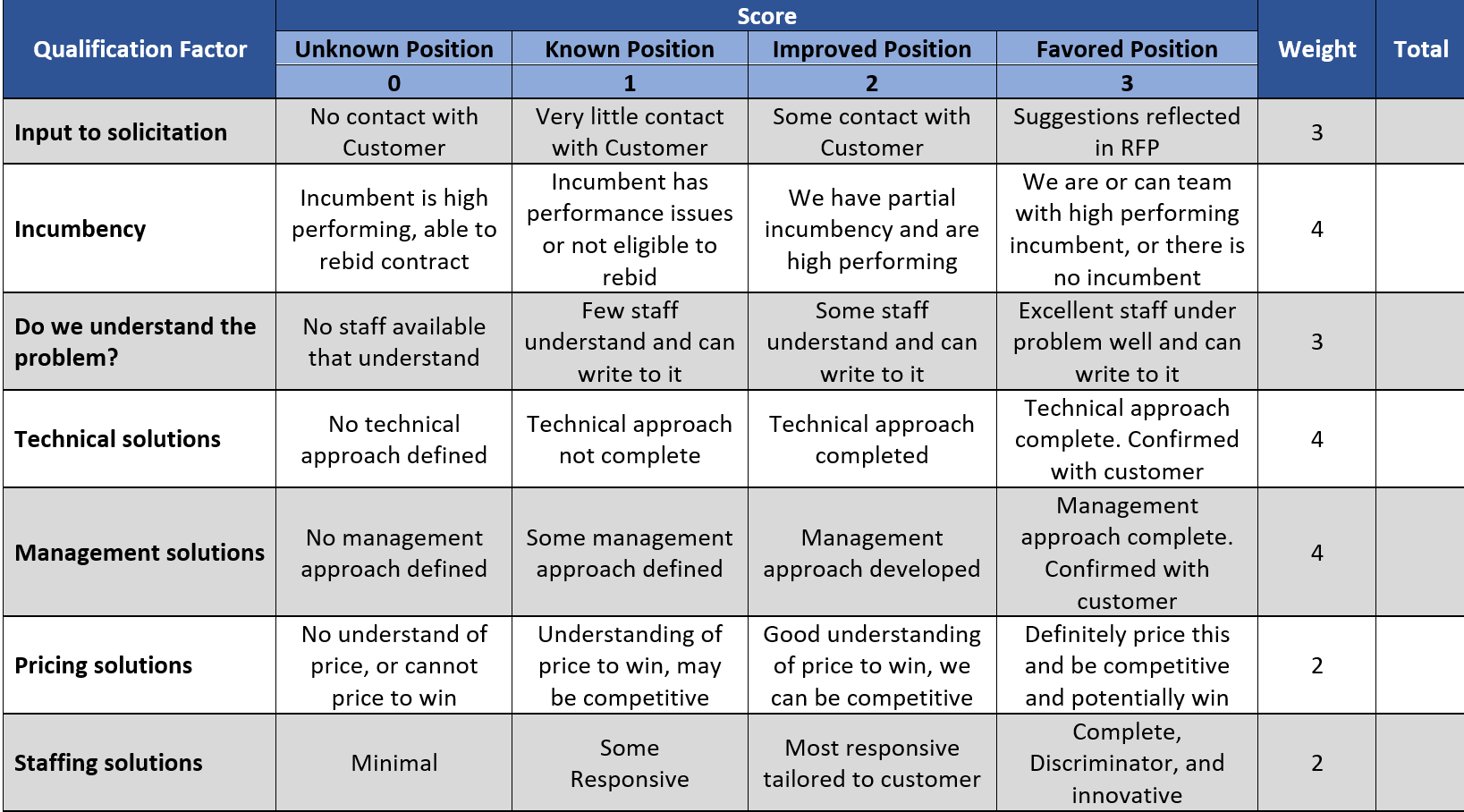2 min read
New OneTeam Features - February 2024
OneTeam users will notice a few new changes beginning February 2024. We released updates and new features to give our...
By: OneTeam on Jun 18, 2021 8:23:00 AM

Federal government contractors are always looking for the next contract win - which begins by qualifying contracts, also called qualifying bids or opportunities. Qualifying is the process of evaluating an opportunity against your company's past performance, corporate capabilities, and impacts to its current business.

Successful contractors implement capture management plans to learn about the contract opportunity and the customer. Some of the best capture plans use an analytical process to gather data and evaluate the proposed contract opportunity to determine if the opportunity is a good fit for them and support the probability of win or PWin.
When considering a potential opportunity, Capture Managers should answer these important questions first:
After addressing these questions, you can begin to dig deeper into the opportunity qualification process. Since past performance most often uses pass/fail evaluation criteria, you MUST pass to be a viable candidate for the contract. Your past performance does not have to exactly match the proposed opportunity, but you should have an associated capability. You or your teaming partners must be able to contribute closely related and relevant past performance. The government customer must be comfortable that your past performance supports the understanding of their needs and the execution of their work. In the DoD world, past performance is an assessment of confidence (high, significant, satisfactory, unknown, little, or no confidence) in your recent, current, and relevant performance.
Past performance is one of many factors that should be considered when making a go/no-go decision in pursuing contract opportunities. Each company sets their own criteria for what constitutes a go/no-go or bid/no-bid decision. A Qualification Matrix can help you to analyze an opportunity by assigning scores to important questions about the work and how it might impact your company. The process is analytical and is designed to rely on data to support bid decisions.
Create a qualification matrix based on your go/no-go criteria and then review each factor in your qualification matrix, preferably with others to gather different points of view. Then, throughout the capture process, re-evaluate the qualification matrix and score your company at regular intervals or milestones to determine which factors you have improved your position, and which items you still need to improve. If some factors are not improving over time, add action items to your capture plan to address them. Answer the criteria from the customer’s point of view, not your point of view.
This is where the hard work of capture takes place. Talk to the customer, colleagues, teaming partners, and anyone else who can provide insight into the contract and the customer’s needs. Gathering information and regularly reviewing each of the criteria in your qualification matrix will improve your position and increase your PWin.
An easy way to view the qualification process is that scores for your company fall into these general categories: unknown, known, improved, or favored positions. Your goal is to be in the favored category for as many factors as possible.
Here are a few strategies to get your BD organization started with implementing a qualification matrix:
Use your pre-RFP interactions with the customer to help determine the importance of factors. You may need to customize the qualification matrix for different opportunities. For example, some solicitations may not require past performance as an evaluation factor. If this is the case, remove it from your qualification matrix.
You can use a qualification matrix to support your Shipley Gate Reviews and to present the opportunity to decision makers. When you use standardized factors for all opportunities, you will be able to compare opportunities to focus your attention and B&P dollars on those that are best suited for your capabilities, past performance, cost profile, and those that fit into your strategic plan.

A Qualification Matrix is just one of the tools in your capture management toolkit to help you make better informed business development decisions. Download this Word version of a Qualification Matrix that you can customize to use in bid qualifications.
Feb 23, 2024 by OneTeam
OneTeam users will notice a few new changes beginning February 2024. We released updates and new features to give our...
Nov 20, 2023 by Donna T. Hamby, CP.APMP
As November approaches each year, our thoughts turn to Thanksgiving with the celebrations of food, family, and...
Aug 23, 2023 by OneTeam
OneTeam users will notice a few new changes beginning August 18, 2023. We released updates and new features to give...